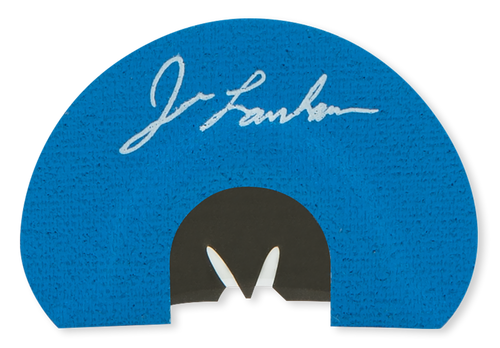The Rolling Thunder TCD-JRL4 delivers authentic turkey vocalizations through its precision-engineered 3-reed diaphragm design. This V-cut configuration produces the realistic yelps, purrs, and clucks that bring gobblers within range during spring and fall seasons.
What Makes This Different
The TCD-JRL4 features a strategically positioned V-cut in the latex reeds that creates natural pitch breaks and raspy tones found in wild turkey communication. Unlike single-reed calls that limit tonal range, this 3-reed system allows hunters to produce everything from soft tree talk to aggressive cutting sequences. The latex thickness and tension are calibrated specifically for turkey frequency ranges between 200-4000 Hz.
Key Features
- 3-reed latex diaphragm construction for extended tonal range
- V-cut design creates authentic raspy breaks and pitch variations
- Horseshoe frame fits comfortably against roof of mouth
- Produces yelps, clucks, purrs, and cutting sequences
- Latex reeds maintain elasticity in temperatures from 20-90°F
- Compact design allows hands-free operation while aiming
- Works effectively for both Eastern and Western turkey subspecies
Field performance centers on the call's ability to mimic hen turkey cadence and tone quality that triggers gobbler responses. The V-cut reed configuration excels at producing the irregular pitch breaks that make vocalizations sound natural rather than mechanical. Hunters can adjust air pressure and tongue position to create soft morning tree talk or aggressive midday challenges. The diaphragm design eliminates movement that might alert sharp-eyed turkeys during close encounters.
Technical Specs
- Reed count: 3 latex reeds
- Cut style: V-cut configuration
- Frame material: Horseshoe-shaped aluminum
- Reed material: Natural latex
- Overall dimensions: 1.25" x 0.75"
- Weight: 0.1 oz
- Target species: Wild turkey (all subspecies)
- Operating temperature range: 20-90°F
The TCD-JRL4 represents proven diaphragm call technology refined for consistent turkey communication. Experienced callers appreciate the tonal control while newcomers benefit from the forgiving reed setup that produces realistic sounds with moderate practice.








